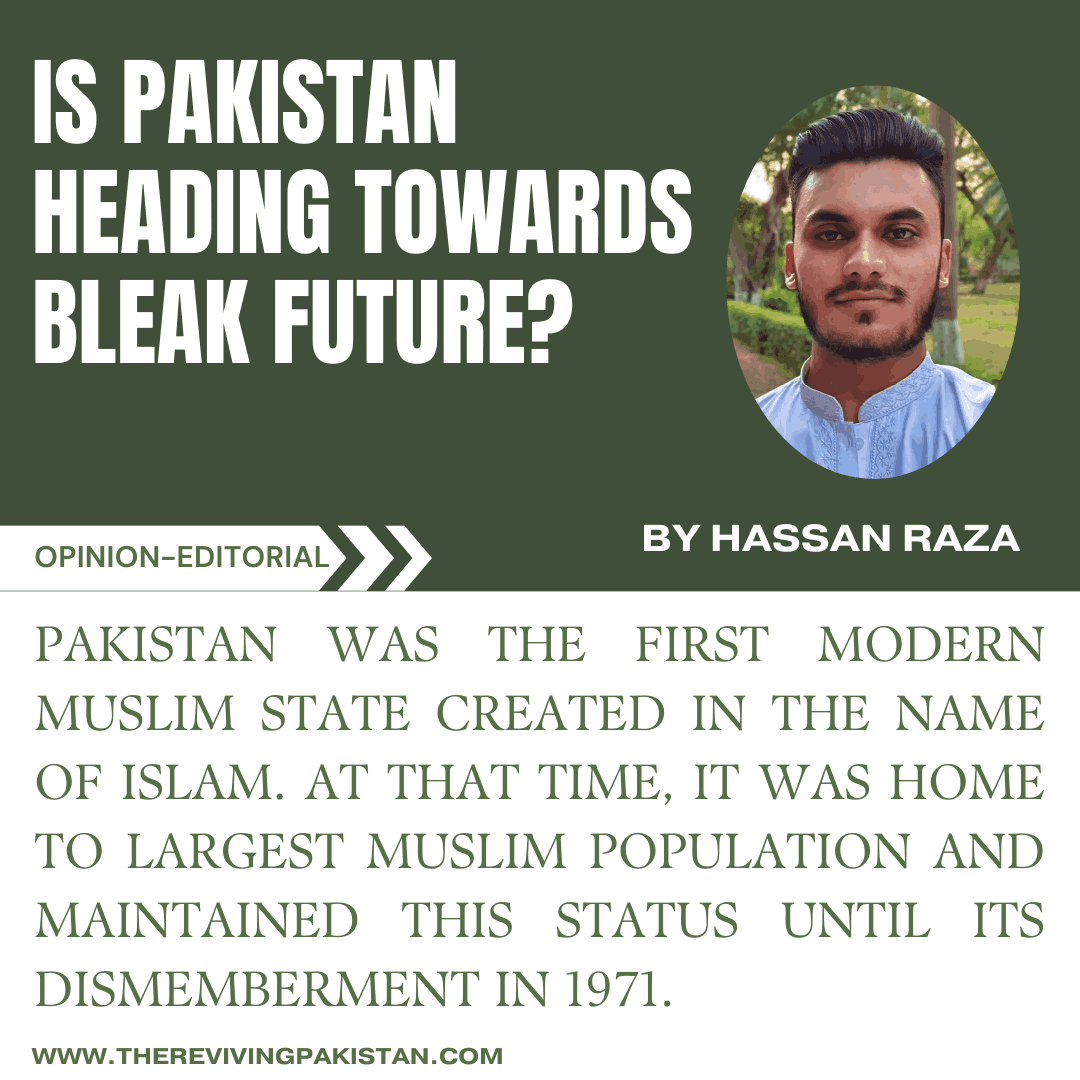About the Author(s)

Hassan Raza
Author is an undergraduate student of the University of Central Punjab, Lahore. He is currently studying international relations (IR). Furthermore, he have also worked with many non-governmental organizations for social services.
Introduction:
Pakistan was the first modern Muslim state created in the name of Islam. At that time, it was home to largest Muslim population and maintained this status until its dismemberment in 1971. Right after the bloody partition of the subcontinent in 1947, Pakistan faced numerous challenges including economic, lack of infrastructure, settlement of migrants from India and territorial disputes with its neighbors. Britain’s hasty departure from subcontinent left this region embroiled in territorial disputes. These disputes led to continuous wars with India in 1965,1971,1999 and border skirmishes with Afghanistan.
A constant threat of war with its neighbors necessitated increased defense spending. Ayub Khan’s martial law is still considered “era of development” but it failed to establish inclusive institutions resulted in temporary growth under exclusive institutions as Daron acemoglu and James Robinson argues development under exclusive institutions are possible but are for temporary period.
From 1973 to contemporary:
After adoption of 1973 constitution, Pakistan saw intense political turmoil and 2 martial laws. During these 50 years, Pakistan has taken ample amount of bailout packages, loans and heavy borrowing from friendly nations. These loans have stacked up Pakistan with immense amount of debt.
In 2024-25 budget, Pakistan has increased 17.5% in its defense budget leading to total amount of 6.15 Billion USD and even these figures are present incomplete picture of actual military’s expenditure. This amount is horrendous for a near bankrupt country. With little priority and allocation of budget funds to industrialization, human development, education and inclusive institutions these will lead further imposition of taxes on fragile middle class and already poverty stricken poor class.
As of 2024, Pakistan has become 5th most populous state in the world with 1.9% annual increase that population. With such an high amount of population and no attention on inclusive economic institutions, Pakistan is still an “agrarian” state in the age of AI (Artificial intelligence).
It has reached to situation where its large youth population is unemployed. Lack of inclusive institution and continuous political turmoil has spooked FDI (Foreign Direct Investments) in to the country. Since 1958, Pakistan has been borrowing money from IMF and not generating economic wealth, this ignorance has landed government of Pakistan to accumulate 14 billion rs daily in loans to meet it’s expenses.
With such great debt and unemployed youth, a nation cannot succeed in upcoming years especially if government’s priority is not human development or establishment of inclusive economic institutions but prioritizing otiose sectors. A rising population in third world country is negative sign for the government but producing unskilled youth is dangerous for the economy as it acts as bulwark in economic progression rather than supporting it.
This is due to lack of reforms and little attention on economy, this situation have ramped up brain drain of skilled workers, in year 2023 more than 850,000 citizens left the country for better education and opportunities. Right now a significant of students after graduation want to leave Pakistan for better jobs and brighter future in foreign country.
“So how can a nation become great when it’s greatest men lie unused, discouraged, perhaps unknown?” -Fredrick Nietzsche
Tax cuts to elite class, huge defense budget and no novel strategy to curtail current economic situation are leading people to discover informal means to earn money. These dilemmas are augmented by increased terrorist attacks on military and LEAs (Law Enforcement Agencies) in western provinces. As Pakistan’s situation is tattering, these challenges are frustrating citizens and lack of hope left in this country. This critical juncture can lead to further dismemberment and even civil war as unrest in western provinces are increasing.
Furthermore, the civilian leadership have failed to introduce institutional reforms. The absence of reforms in institutions are costing taxpayers a hefty amount in terms of high electricity prices, levy tax on fuel and other taxes. Hence, Pakistan is strangled in vicious circle of taxes, debt and political instability with terrorism knocking on its door.
All these scenario leads back to initial years of creation of Pakistan. Early political leadership failed to establish inclusive political and economic institutions that bred political stability and support economic innovation in the country. As days are going forward it is hard to imagine with such unscrupulous and opportunistic leadership will land my beloved country into complete chaos. Judging by the current circumstances of Pakistan the future appears shallow. These sort of dilemmas require quick remedy through strong cohesion among politicians, institutions and citizens to thwart these challenges.
Conclusion:
In conclusion, Pakistan is burdened with immense foreign debt with political turmoil and terrorism. Politicians need to build up a sense of political forbearance augmented by radical reforms in public institutions, establishment of inclusive economic institutions to thwart deteriorating economy and utilize its strategic location to increase exports. These initiatives will not only benefit Pakistan economically but it will also restore hope among people for a brighter and prosperous future.

